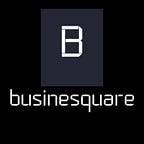Choose the right features for your mobile app
The development of a successful product begins with a solid authority of planning.
On a high stage, the purpose of product definition is to outline the product’s purpose, features, and functionalities. It will guide all facets of production, including but not limited to design, development, and quality assurance, so it needs to achieve particular goals:
- Give a foundation off which to map the development cycle
- Define a product with the purpose of solving a key problem(s)
- Map out features and requirements necessary to make the product successful
The third goal in this list is often not emphasized enough in the product definition phase. Yet, it should be at the basis of all product decision, guiding what features are implemented, their importance to the success of the project, as well as success criteria. This post is going to give tips on how to map out and build product requirements to ensure your PRD.
1. Research
The ultimate goal of any project is to build a compelling product. Achieving this begins with research. Customers, competitors, trends, available technologies, users: these are all critical points of research that should be used to inform the direction of your product. Prior to development, you should have a clear understanding of the need or issue you are trying to solve so you can determine how your product will address it.
Not only is research highly beneficial before your product is developed, but will serve you best when used throughout the entire product lifecycle so that you can adjust and adapt to changing customer and market demands.
2. Define the Purpose
What is the purpose of the product? What problems does it seek to solve? Who is the product for? What kind of customer scenarios is possible/probable? What is the value proposition? Defining the purpose is important because it helps ensure you are developing a compelling product build with the purpose of solving a real problem. How will you solve user pain points and exceed their expectations far beyond what your competition offers? The process of product definition will help you find answers to all of these questions.
3. Choosing Mobile Application Features
Features are an essential part of product definition. All requirement needs to be clearly broken down for the product group, whether in the form of a PRD or client stories.
Map out the mobile application features that will help you achieve your product objectives. Do they solve the problems that you have identified? Which features support which objectives? What is the use case scenario for all feature? Answering these questions will help you detail clearly both the function and its purpose so that your development group can understand its purpose and implement accordingly.
4. Determine Success Criteria
Success criteria set the benchmark for what the minimum requirements of a successful product are. Defining what you study a success for all feature as it pertains to the overall product/project gives the product team with an idea of what they need to accomplish for the product to be released.
For example, if one feature is supposed to allow the user to bring up a dropdown menu by clicking, success criteria for that feature would be when the user is able to accomplish that goal while using the Mobile application.
5. Prioritize Your Features
Product owners should prioritize all of the requirements to indicate which are most vital to the success of the product. One common strategy is to classify requirements based on importance. For example, some mobile application features are critical, whereas others may be nice to have but are not mandatory for release. Devising a consistent classification system will help guide success criteria and give a clear picture of critical features versus highly desired or nice to have features.
It is also necessary to rank feature priority within all classification. This helps to ensure that the most critical features are done first in the case that project timeframe changes or your team hits roadblocks.
Product definition is notably valuable for directing scope creep, which is when a project grows far beyond its original size. If you haven’t properly defined the product, scope creep will likely occur, often deviating from the initial agreement of the product. Scope creep occurs when group members change their mind and suggest features that are irrelevant to the overall project goal, which can cause a product to fail.
Changes during product development are likely to occur however, it’s easy to let scope creep take control of your original vision and strategy. the group must carefully consider changes in the plan if they arise. Once the product definition has been established, Product definition ensures that the project remains focused on the ultimate goal, saving on cost and time.
Ultimately, focusing your efforts into correctly defining your product in detail will help build the basis of a successful product that will solve pain points. This could be internally for your company, or for a user base that is external to your company. Either way, detailed product definition is essential if you hope to release a product that performs well in the application market.
Businesquare Technology
Highly Experienced team of Mobile App Developers with 7+ Years of experience. 100% On Time Delivery. 35+ Full Time Developers. Fortune 500 Clients. 25% Discount for Startups. 150+ Apps Delivered.
